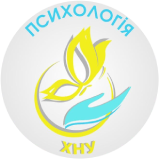DIRECTIONS AND METHODS OF SOCIO-PSYCHOLOGICAL ACTIVITY ON PROFESSIONAL SELF-DETERMINATION OF HIGH SCHOOL STUDENTS
DOI:
https://doi.org/10.31891/PT-2023-4-5Keywords:
vocational guidance, professional self-determination, high school students, social pedagogue, practical psychologist, directions and methods of social and psychological activityAbstract
The article deals with theoretical aspects of socio-psychological activity on professional self-determination of high school students in modern conditions.
The author of the article considers such concepts as «professional self-determination», «readiness to choose a profession», «career guidance». It is noted that the concept of «professional self-determination» should be defined as a process that covers the entire period of professional activity of an individual: from the emergence of professional intentions to retirement from employment. The readiness of high school students to choose a future profession is based on the coordination of their life plans and professional intentions. Career guidance is a set of measures aimed at optimising the process of choosing and employing young people in accordance with their desires, abilities and taking into account the needs of specialists in all areas of professional activity.
The structure of high school students' readiness for a conscious choice of profession is determined, which consists of such components as: moral, psychological and practical preparation of young people for choosing a profession.
The author of the article finds out that the activity of professional self-determination of high school students involves not only the cooperation of a social pedagogue and a practical psychologist of an educational institution, but also their cooperation with parents, specialists of vocational and higher education institutions, specialists in various fields of professional activity, as well as with the administration of enterprises and organisations.
These directions and methods of activity include: providing young people with deep and comprehensive knowledge of the world of professions through professional consultations and conversations with them; helping high school students to deeply understand their abilities, needs, and values through the use of professional diagnostic methods; developing the need for professional self-determination; helping to activate the aspirations of high school students to find their own way to obtain a particular profession; creating conditions for high school students to model the ideal image of a profession.







